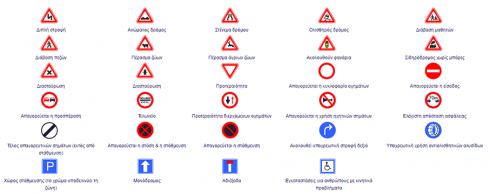If the reason is insurmountable and you should definitely leave the warmth of the house and drive out on snowy roads, then follow some tips that may prove to be extremely useful.
Choose the area you want and check the weather.
What should a driver do when he moves on snowy or frozen roads?
The first thing that comes to my mind is the following phrase:
“You should push the accelerator so gently as if there was a fresh egg between the shoe and the pedal, so as not to break it.” Something similar, as you can easily understand, also applies to the brake pressure.
Modern cars may have developed systems such as ABS and Electronic Stability Program (ESS) to make the driver’s work incomparably easier, however, the basic question remains the same.
No abrupt movements.
Therefore when we drive in the snow, we must be fully committed to what we are doing, and we must avoid the sharp reactions. Whether the steering wheel is twisted, either during braking or when the throttle is pressed.
Still, when you are stopped and you want to start, you need to push the throttle in a gentle and progressive way. In all other cases, the wheels will spin and, due to the high road surface slipperiness, the front or rear of the car (depending on which wheel drive) will move uncontrollably. In many cases, it may be necessary to try to get started with a second gear.
We never stop uphill.
There is no need to have a PHD in physics to understand what we are stating. If you stop a car on an uphill road with snow or ice, then it’s from hard to unlikely to be able to move it forward again. So, you may have to let it roll back and, when you find the straightening, take up forts and go back up the hill.
Getting down from a hill you must never leave the car without speed and of course, the lower the average hourly speed you are moving, the more likely you are to reach your destination safely.
The tires.
Beyond that, talking about winter tires is something that is not appropriate for the weather conditions prevailing in Greece. But if you want to move on snow and ice, it is best to deflate the tires so as to create a greater road contact surface and increase as much as possible the adhesion limits.
Get going, have you lost control of the car? What shall you do?
Once you decide to leave the house when it’s snowing, it is a possibility that you might lose control of the car at some point.
What are you doing in such a case?
The answer is nothing. Leave the steering wheel, leave the pedals and wait for the car to stop. If you press the brake, the sliding force increases and the car may accelerate rather than slow down. Turning the steering wheel in the other direction is like using a … canceled credit card. There is no result.
Safety distances.
If you drive in normal conditions the distance from the vehicle in front should be about 5 meters. Driving at the same speed on a slippery road with snow or ice, this distance triples.
In addition, if on a normal road you start braking to stop at the traffic light 10 meters ahead of the traffic light; on the frozen road it is good to do it from 25-30 meters before.
Of course, it is self-evident that you always drive at very low speed, which should never exceed 40-50 km / h.
Chains are not a panacea.
It is a fact that few of the drivers of large urban centers know, on the one hand, to place chains in their cars and on the other hand to move with them. It causes the common mind to see cars with chains driven on the cleared roads, making like crushing tanks.
Indeed, gentlemen. Chains are only for the tracks that are snowy or frozen. When we go out on a cleaned road, then we take them out. It can be a hassle, but this is imposed by common sense, and not only.
Choose the area you want to visit and check the weather conditions.
We also always place the chains on the drive wheels. This advice is addressed to some SUV drivers whose vehicle has an electronic four-wheel drive and they put the chains on the rear wheels. That is, while the drive wheels are the front and the rear wheels are triggered only when the vehicle loses its grip on the road, some put the chains at the rear wheels.
You should also know that all chains do not do for all cars. As the tires have numbers and each manufacturer chooses the type that fits into each car, respectively each pair of chains fits for a certain type (s) of tires. This is written on the chain box.
It is advisable to make a rehearsal before going out on the road, so that you can learn to put them on and take them out with relative comfort. In addition, as there will be snow or ice on the road, a pair of gloves (of those used by the gardeners and, if possible, waterproof) would be best to use for chain insertion and removal.
In conclusion, I repeat, that if it is not necessary to go out, do not do it. Even if you can drive well in the snow, keep in the back of your mind that maybe others cannot.



